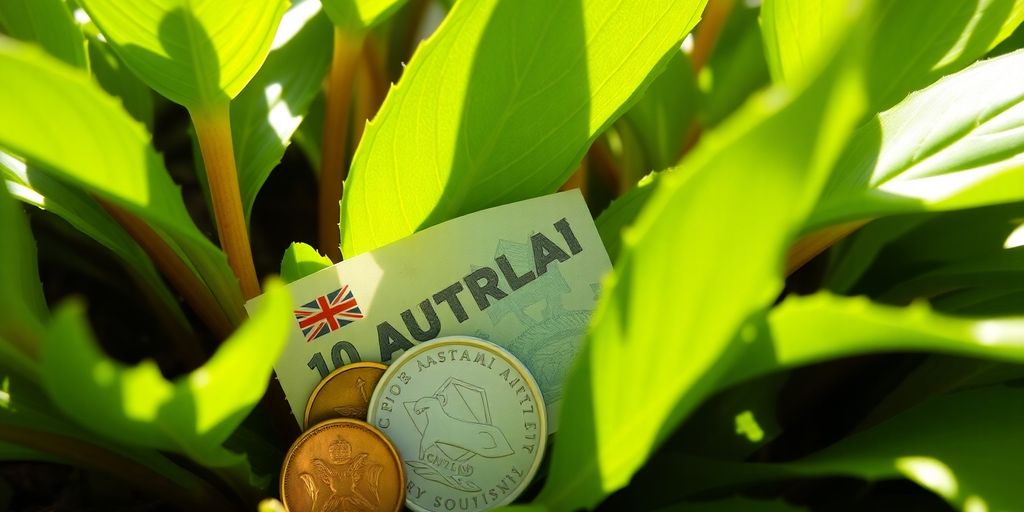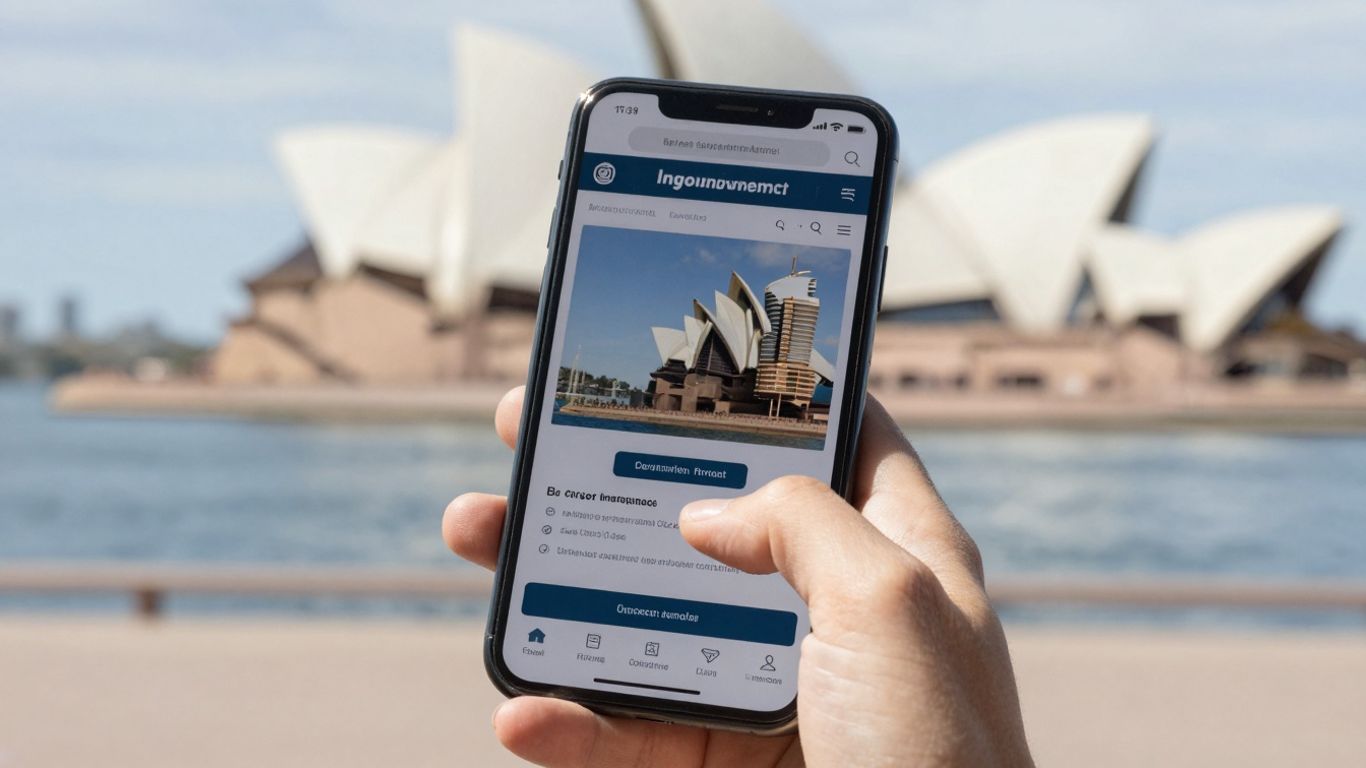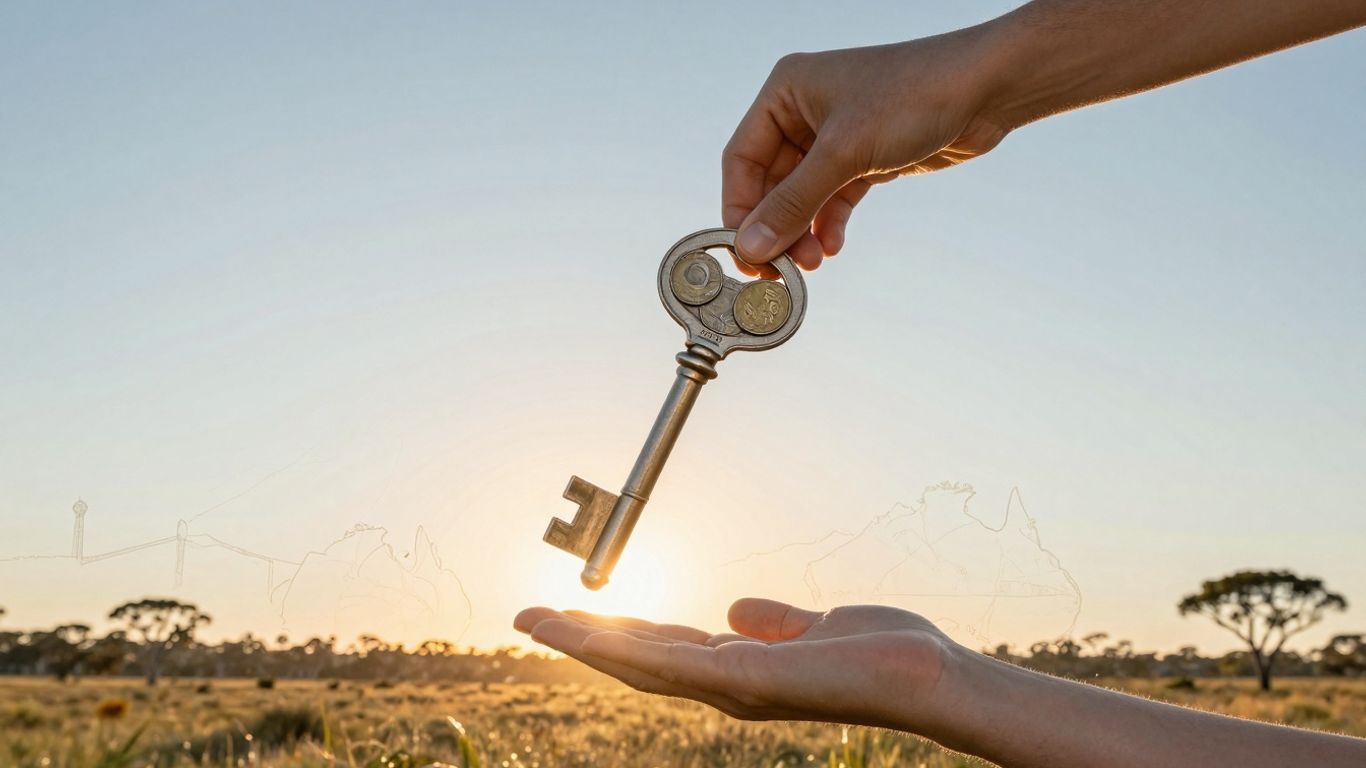G’day! So, 2025 is just around the corner, and if you’re like a lot of us Aussies, you’re probably thinking about how to get a bit more bang for your buck. We all want to save a bit more, maybe pay off some debts, or just feel a bit more in control of our finances. It can feel a bit tricky with everything costing more these days, but honestly, there are some pretty straightforward money saving tips 2025 that can make a real difference without turning your life upside down. Let’s get stuck into it.
Key Takeaways
- Get your finances sorted by creating a budget that actually works for you, whether it’s the 50/30/20 rule or something else entirely.
- Set clear, achievable savings goals, like saving for a holiday or just building up a buffer for unexpected stuff.
- Keep a close eye on where your money is going – knowing your spending habits is half the battle.
- Look into high-yield savings accounts or CDs to make your savings grow a bit faster.
- Tackling high-interest debt can save you a heap of money on interest payments in the long run.
Mastering Your Budget Down Under
Getting a handle on your finances is the first big step towards a healthier bank balance. It’s not about deprivation, it’s about being smart with your cash so you can actually enjoy life more, and worry less. Think of it as giving your money a job to do.
Setting Realistic Savings Goals
Before you start squirrelling away every spare dollar, you need to know why you’re saving. Is it for a deposit on a house, a holiday, or just to have a bit of a buffer for unexpected stuff? Having a clear goal makes it easier to stay motivated. Don’t aim for the moon straight away; start with something achievable, like saving an extra fifty bucks a fortnight. Once you hit that, you can bump it up. It’s all about building momentum.
Tracking Your Spending Habits
This is where you really get to know where your hard-earned cash is going. You might be surprised! For a month, just jot down everything you spend, no matter how small. You can use a notebook, a spreadsheet, or even a budgeting app. The key is to be honest and thorough. Once you see it all laid out, you can start to spot those sneaky expenses that add up, like daily coffees or those impulse buys at the supermarket. Identifying these patterns is the first step to changing them. For some handy tips on managing your money, check out saving money in Australia.
Choosing the Right Budgeting Method
There isn’t a one-size-fits-all approach to budgeting. Some people swear by the 50/30/20 rule (50% needs, 30% wants, 20% savings), while others prefer the envelope system or a zero-based budget. The best method is the one you’ll actually stick with. Try a couple out and see what feels natural. The goal is to create a plan that works for your lifestyle and helps you reach your financial targets without feeling like a chore. It might take a bit of tweaking to get it just right, and that’s perfectly fine.
Smart Strategies for Grocery Savings
Feeding yourself and your family doesn’t have to drain your bank account. With a few smart moves, you can significantly cut down your grocery bill. It’s all about being a bit more strategic when you shop and plan your meals.
The Power of a Shopping List
This is probably the most basic tip, but honestly, it’s a game-changer. Before you even think about leaving the house, take a good look in your fridge and pantry. What do you actually need? What’s running low? Write it all down. Sticking to your list is key to avoiding those impulse buys that sneak into your trolley when you’re browsing the aisles. It stops you from buying things you already have or items you don’t really need. It’s amazing how much you can save just by having a plan. Some people even find that using AI for meal planning can help them cut their grocery expenses by more than half, which is pretty wild when you think about it. You can find some great meal planning apps online to get you started.
Embracing Generic Brands
Don’t get me wrong, sometimes a specific brand is just the brand. But for a lot of everyday items, the generic or store-brand versions are just as good, if not better, and a whole lot cheaper. Think pasta, canned goods, cleaning supplies, even some dairy products. The packaging might not be as fancy, but the contents are usually pretty comparable. It’s worth doing a side-by-side comparison next time you’re at the supermarket. You might be surprised at the savings you can rack up without sacrificing quality.
Maximising Loyalty Programs
Most supermarkets these days have loyalty programs, and they’re usually free to join. Make sure you sign up for them! You can often get discounts on certain products, earn points that can be redeemed for money off your shop, or get special offers sent to your email. It’s like getting a little bonus just for doing your regular shopping. Keep an eye out for fuel discounts too, as many supermarkets offer these if you spend a certain amount. It all adds up, and these little perks can make a noticeable difference to your overall grocery spend over the year.
Boosting Your Savings with Smart Banking
When it comes to making your money work harder for you, your bank account choices really matter. It’s not just about where you stash your cash, but how you do it. Let’s look at a few ways to get more bang for your buck from your banking.
Exploring High-Yield Savings Accounts
Forget those basic savings accounts that barely give you any interest. We’re talking about high-yield savings accounts (HYSAs). These accounts are designed to grow your money faster because they offer much better interest rates than your typical bank. It’s like getting paid more just for keeping your money in the bank. While the national average interest rate might be pretty low, HYSAs can offer rates that are significantly higher, sometimes even 4% APY or more. This means your savings can grow at a much quicker pace. It’s a smart move if you want your emergency fund or short-term savings goals to build up faster. You can find these accounts at many different banks, so it’s worth shopping around to see who’s offering the best deal. Check out options for high-yield savings accounts to see what’s available.
Automating Your Savings Transfers
One of the easiest ways to build up your savings is to make it automatic. Seriously, if you don’t have to think about it, it’s much more likely to happen. You can set up regular transfers from your everyday transaction account to your savings account. This could be weekly, fortnightly, or monthly – whatever fits your pay cycle. The beauty of this is that the money is moved before you even have a chance to spend it. It’s a set-and-forget approach that really works. You might not even notice the money is gone from your main account, but it’s steadily growing in your savings. It takes a bit of setup, but once it’s done, your savings will grow without you having to lift a finger.
Understanding Certificate of Deposit Options
Certificates of Deposit, or CDs, are another way to potentially earn a better interest rate on your savings, but they come with a catch. With a CD, you agree to leave your money in the bank for a fixed period, like six months, a year, or even longer. In return, the bank usually offers a fixed interest rate that’s often higher than what you’d get with a regular savings account. The longer you commit your money for, generally the higher the interest rate you can expect. However, the big thing to remember is that your money is locked away. If you need to pull it out before the term is up, you’ll likely face penalties, which can eat into your earnings. So, CDs are best for money you know you won’t need access to for a while. They’re a good option for specific savings goals that have a set timeframe.
Tackling Debt to Free Up Funds

Carrying debt can feel like a constant weight on your shoulders, but getting it under control is totally achievable. It’s about making a plan and sticking to it. The good news is that by reducing your debt, you’re essentially freeing up cash that can go towards your savings goals or even just make your day-to-day life a bit easier. Let’s break down how to get on top of it.
Prioritising High-Interest Debt
When you’re looking at your debts, the ones with the highest interest rates are usually the biggest drain on your wallet. Credit cards, for example, often come with eye-watering interest rates that mean you’re paying a lot more than the original purchase price over time. Focusing your extra payments on these first, often called the ‘debt avalanche’ method, can save you a significant amount of money in the long run. It might feel like slow progress initially, but it’s a smart way to cut down on the total interest paid.
Exploring Debt Repayment Strategies
There are a couple of popular ways to tackle your debts. The ‘debt snowball’ method involves paying off your smallest debts first, regardless of the interest rate. Each time you pay off a debt, you roll that payment amount into the next smallest debt. This gives you quick wins and can be really motivating. On the other hand, the ‘debt avalanche’ method, as mentioned, prioritises debts with the highest interest rates first. While it might take longer to see the first debt disappear, it’s mathematically the most efficient way to save money on interest. Choosing the right strategy often comes down to what keeps you motivated.
It’s important to remember that paying off debt isn’t just about numbers; it’s also about building good financial habits and regaining control of your money. Small, consistent steps can lead to big changes over time.
Refinancing for Lower Payments
If you have significant debts like a mortgage or even some personal loans, refinancing could be a game-changer. This involves taking out a new loan to pay off your existing ones, ideally with a lower interest rate or more favourable repayment terms. For example, if you own a home and interest rates have dropped since you took out your mortgage, refinancing could potentially lower your monthly repayments significantly. It’s worth looking into options like debt recycling if you have investment properties, as this can convert non-deductible debt into tax-deductible debt. Always compare offers carefully and consider any fees involved before making a decision.
Building an Emergency Fund

Life throws curveballs, doesn’t it? One minute you’re cruising along, the next your car decides it’s had enough, or you’ve got an unexpected medical bill. That’s where an emergency fund comes in. It’s basically a safety net for those ‘oh no!’ moments, so you don’t have to dip into your regular savings or, worse, rack up credit card debt.
The Importance of an Emergency Buffer
Think of it as your financial shock absorber. Having a buffer means you can handle unexpected expenses without derailing your entire budget. It gives you peace of mind, knowing that a flat tyre or a sudden job loss won’t send you into a panic. It’s about building resilience into your financial life.
Calculating Your Ideal Emergency Fund
So, how much do you actually need? The general advice is to aim for three to six months’ worth of your essential living expenses. To figure this out, you need to list all your non-negotiable monthly costs – rent or mortgage, utilities, food, transport, insurance, minimum debt payments. Add them all up, then multiply by three, and then by six. This gives you a range to work towards. Don’t get too stressed if that number looks big right now; the key is to start somewhere.
| Expense Category | Monthly Cost |
|---|---|
| Rent/Mortgage | $2000 |
| Utilities | $300 |
| Groceries | $600 |
| Transport | $250 |
| Insurance | $150 |
| Total Essential Expenses | $3300 |
Based on this, a 3-month fund would be $9,900, and a 6-month fund would be $19,800.
Keeping Emergency Savings Accessible
This money needs to be easy to get to when you need it, but not too easy that you’re tempted to spend it on, say, a new gadget. A separate savings account is usually the best bet. Some banks even let you create ‘pots’ or ‘buckets’ within your savings account, which can be handy for visualising your emergency fund. You want it somewhere safe and earning a little bit of interest, but readily available. A high-yield savings account is a good option for this, as it offers better returns than a standard account, and you can still access the funds relatively quickly. It’s a smart move to automate transfers to this account, so you’re consistently building your buffer without having to think about it too much. Check out options for saving money to help grow this fund faster.
Building an emergency fund isn’t about deprivation; it’s about preparation. It’s a proactive step towards financial security, allowing you to face life’s uncertainties with greater confidence and less stress.
Maximising Your Income and Investments
Alright, let’s talk about making your hard-earned cash work a bit harder for you in 2025. It’s not just about cutting back, but also about smart moves to grow what you’ve got. We’re looking at how to boost your income and make your savings work better, especially here in Australia.
Leveraging Employer Retirement Contributions
This is a big one, and honestly, a lot of people miss out. If your employer offers a retirement plan, like a superannuation fund, and they chip in too, you’re basically getting free money. Make sure you’re contributing enough to get the full employer match. It’s like a bonus you’re leaving on the table if you don’t. Even a small increase in your own contribution can make a massive difference over time, thanks to compound growth. Think about it: a 1% increase might only be a few bucks from each pay, but over decades, that adds up to a serious chunk of change for your future self. It’s a pretty straightforward way to boost your savings without feeling the pinch too much day-to-day.
Considering Tax-Advantaged Accounts
Beyond your super, there are other accounts designed to help your money grow with tax benefits. For instance, if you’re self-employed or have extra income, looking into options like a small business superannuation contribution or even exploring how to make the most of your tax deductions can be really beneficial. These accounts are set up to encourage long-term saving, often by reducing the tax you pay on your earnings or contributions. It’s worth doing a bit of research to see which ones fit your situation best, as the tax savings can really accelerate your wealth building.
Exploring Investment Opportunities
Once you’ve got a solid savings base and are contributing to retirement accounts, it’s time to think about investing. This doesn’t have to be complicated or scary. You could start with something simple like a managed fund or even exchange-traded funds (ETFs) that spread your money across lots of different companies. The key is to invest for the long haul. While there are always risks involved with investing, historically, it’s been one of the best ways to grow your wealth significantly over time, outpacing inflation and keeping your money ahead of the game. It’s about making your money work for you, rather than just sitting there.
Cutting Costs on Everyday Expenses
It’s easy to let the little expenses creep up, but tackling them head-on can make a real difference to your savings. Think about your daily commute, your lunch breaks, and even how you unwind after work. Small changes here can add up to significant savings over time.
Reducing Transportation Costs
Getting around can be a big drain on the wallet. If you drive, look into refinancing your car loan or shopping around for cheaper car insurance. Even small savings on your premium can add up. When it comes to fuel, keeping up with your car’s maintenance can improve efficiency, and planning your trips to do multiple errands at once saves petrol. Apps that compare fuel prices or loyalty programs at supermarkets offering fuel discounts can also help. If you don’t drive much, or for shorter trips, consider leaving the car at home. Walking, cycling, or using public transport are much cheaper alternatives. If your workplace offers any commuter benefits, definitely look into those. For occasional car needs, car-sharing services might be cheaper than traditional rentals. Making conscious choices about how you travel can really cut down your expenses.
Minimising Restaurant Spending
Eating out is a nice treat, but it’s also one of the easiest places to overspend. Cooking at home is almost always cheaper than buying meals out. If you do eat out, try to go less often. Look for places with happy hour deals, or consider splitting a main course with a friend. Ordering water instead of drinks, and skipping dessert, also helps keep the bill down. Some credit cards offer rewards for dining out, so check if yours does. It’s also worth seeing if any local restaurants have kids-eat-free nights if you have a family.
Finding Affordable Entertainment
Saving money doesn’t mean you have to miss out on fun. Instead of expensive nights out, explore local community events. Many towns have free concerts in the park or local markets that are free to browse. If you’re a movie buff, look for discounted screenings or drive-in cinemas. For home entertainment, consider if you really need multiple streaming subscriptions. Bundling services or choosing just one or two that have the shows you really want to watch can save a fair bit each month. Some venues offer membership programs that give you discounts on tickets and food, which might be worth it if you go often. You can also find great deals on things like CBA’s banking services which might help you manage your entertainment budget better.
Wrapping It Up: Your 2025 Savings Journey
So there you have it, a bunch of ways to get your finances sorted for 2025, Aussie style. It’s not about making massive changes overnight, but rather taking small, consistent steps. Whether it’s tracking where your cash is actually going, setting up an automatic transfer to savings, or just being a bit smarter with your grocery shop, every little bit helps. Remember, even if you slip up one week, just get back on track the next. Building good money habits takes time, but the peace of mind that comes with a healthier bank balance is totally worth it. You’ve got this!
Frequently Asked Questions
How do I even start making a budget?
Start by figuring out how much money you earn each month after tax. Then, list all your regular bills and expenses, like rent, food, and transport. Once you know where your money is going, you can decide where to cut back and how much you can realistically save. Think of it like a treasure map for your money!
What’s the best way to set savings goals?
It’s a good idea to set goals that are achievable. Instead of saying ‘I want to save a million dollars’, try something like ‘I want to save $20 a week for a new pair of shoes’. Breaking down big dreams into smaller steps makes them much easier to reach and keeps you motivated.
Are those cheaper, no-name brand groceries really worth it?
Definitely! Generic or ‘home brand’ products are often just as good as the fancy named brands, but they cost a lot less. You’ll save a decent chunk of change on your grocery bill by swapping them out.
Why do I need an emergency fund, and how much should I have?
Think of an emergency fund like a safety net. It’s money you put aside for unexpected stuff, like if your car breaks down or you have a sudden medical bill. Aim to save enough to cover 3 to 6 months of your essential living costs. Keep it somewhere easy to get to, like a separate savings account.
How can I make saving money automatic?
When you get paid, set up an automatic transfer to your savings account straight away. It’s like paying yourself first! You won’t even miss the money because it’s gone before you have a chance to spend it. It’s a super easy way to build up your savings without even thinking about it.
How does paying off debt help me save money?
Paying off debt with high interest rates, like credit cards, is like saving money because you’re not paying extra interest charges. Try using the ‘snowball’ method (paying off the smallest debts first for quick wins) or the ‘avalanche’ method (paying off the highest interest debts first to save more money overall).





